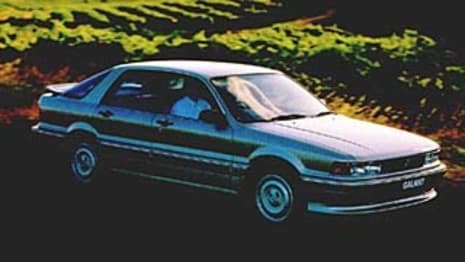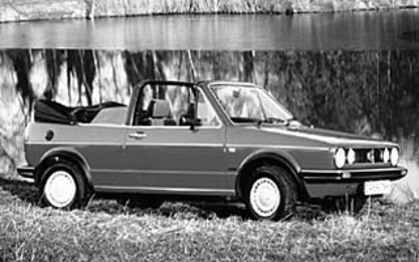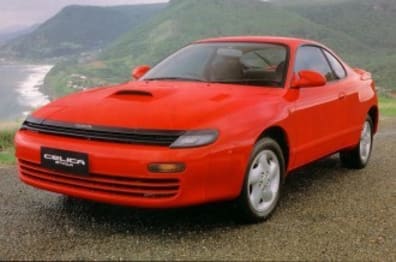
Used Mitsubishi Galant review: 1989-1993
- Mitsubishi Galant
- Mitsubishi Galant 1989
- Mitsubishi Galant 1990
- Mitsubishi Galant 1991
- Mitsubishi Galant 1992
- Mitsubishi Galant 1993
- Mitsubishi Galant Reviews
- Mitsubishi Reviews
- Mitsubishi Sedan Range
- Mitsubishi Hatchback Range
- Sedan
- Hatchback
- Mitsubishi
- Used Car Reviews
- Buying tips
Competition is a healthy thing. As individuals it forces us to strive to do better, and in the automotive world it drives the pace of development. The first motor race was staged the moment the second car was invented. Its creator wanted to show that his was better than the car his rival had built. His objective was to demonstrate to potential buyers that his was the car to buy.
Motor sport was thus begun and it’s been responsible for some of the best and most exciting cars we’ve been offered ever since.
In the 1980s we had a rush of models spun off rally cars competing in the world championship. Among them was the Mitsubishi Galant VR4, a car that sprang from the successful rally car that won the 1990 Australian Rally Championship among many other accolades.
MODEL WATCH
The VR4 looked like most other four-door Galants Mitsubishi was making at the time, unless of course your eyes were tuned to spot the clues that made it stand out from the Galant crowd.
In the case of the VR4 the things that separated it from its cooking-class cousins were alloy wheels, bigger bumpers, a boot-mounted spoiler and the distinctive badges.
It was under the skin that the most significant changes were made to transform the four-door family sedan into a slingshot capable of winning the world rally championship.
For starters there was a turbocharged 2.0-litre double overhead camshaft four-cylinder engine that put out 148 kW at 6000 revs and 279 Nm at 3000 revs and drove all four wheels through a five-speed gearbox and a centre differential.
The centre diff combined a mechanical limited-slip diff with a viscous coupling. Under normal conditions the mechanical coupling split the torque equally between the front and rear wheels, but if there was any slip the viscous coupling directed the torque away from the wheels that were spinning towards those with the most grip. It was a recipe for ensuring optimum traction was always available.
The VR4’s front suspension was fairly conventional MacPherson Strut with an anti-roll bar, but the rear suspension was rather radical. Mitsubishi described it as a double wishbone arrangement, but it was a little more complex than that, with upper and lower links with semi-trailing arms and linkages that provided a small amount of passive rear steering.
The real rear-wheel steering was controlled hydraulically from the front steering pump with a control valve activating a ram that moved the toe-link in the rear suspension. It was designed to operate only over 50 km/h and never in reverse.
Rear steering was not used to improve maneuverability in tight parking situations, but to improve high speed stability when changing lanes or swerving away from danger.
On the road the VR4 was highly praised for its balance and grip under all sorts of conditions and road surfaces. It had a poise that allowed it to swallow twisting strips of black top or dirt without ever losing its composure.
Given its head in a straight line, not its best suite, the 1170 kg VR4 required just over seven seconds to reach 100 km/h; the standing 400-metre dash required 15 seconds.
The VR4 came well equipped, as you would expect. It had standard air-conditioning, a leather steering wheel and cruise control.
IN THE SHOP
The VR4 was a high performance car that encouraged its drivers to explore its impressive limits so check today’s used examples very thoroughly. It’s wise to have an expert go over them to see what’s what under the modest skin.
Many were also modified in the search for even more performance so it’s crucial that any modifications are checked to make sure they are sound, haven’t damaged the car, and are legal.
While the VR4 is generally quite sound and gives little trouble if looked after, not thrashed and well serviced there are a couple of things that can go wrong.
Exhaust manifolds are known to crack. It seems to happen at around the 150,000 km mark so check the manifold carefully for any sign of cracking that might need to be repaired.
It also pays to keep a close eye on the oil level, as oil consumption can be higher than expected.
Front drive shafts are worth checking for wear.
Clutches aren’t a big problem, but they seem to have a life of around 150,000 km, maybe less if it has been abused.
IN A CRASH
Four-wheel drive, antiskid ABS brakes, independent suspension at both ends and four-wheel steering. What more could you want in a primary safety package?
The VR4 was armed with everything you could wish for when trying to avoid a crash so top marks to the hot Mitsubishi.
It’s not such a rosy picture on the secondary safety level as there were no airbags. Airbags were yet to arrive in anything, but the most prestigious models in 1989.
OWNERS SAY
After experiencing the V8 grunt of a Falcon XR8 Adam Davis wanted something a bit more technically advanced. The four-wheel drive turbocharged VR4 was the perfect answer and after some careful research he settled on an unmolested low kay 1992 model with a full service history. It’s now done 145,000 km and has been utterly reliable. He advises anyone to follow the same guidelines in buying a car with low kilometres, one that hasn’t been thrashed and has a full service history.
LOOK FOR
• Awesome grip on all surfaces
• Thrill-a-minute motoring
• Signs of a thrashing
• Unobtrusive looks make it a sleeper
• Usual bump and grind from years on the road
THE BOTTOM LINE
In its day the VR4 was an awesome performer, but age now warrants caution before buying.
RATING
68/100
Pricing
| Year | Price From | Price To |
|---|---|---|
| 1993 | $3,190 | $7,040 |
| 1992 | $3,080 | $7,040 |
| 1991 | $3,080 | $7,040 |
| 1990 | $2,860 | $7,040 |
| 1989 | $2,860 | $5,940 |
Pricing guides
Range and Specs
| Vehicle | Specs | Price* | |
|---|---|---|---|
| SE | 2.0L, ULP, 5 SP MAN | $2,860 – 4,400 | 1989 Mitsubishi Galant 1989 SE Pricing and Specs |
| SE | 2.0L, ULP, 5 SP MAN | $3,080 – 4,730 | 1989 Mitsubishi Galant 1989 SE Pricing and Specs |
| GSR | 2.0L, ULP, 5 SP MAN | $4,070 – 5,940 | 1989 Mitsubishi Galant 1989 GSR Pricing and Specs |
Other cars to consider
$4,070
Lowest price, based on third party pricing data














